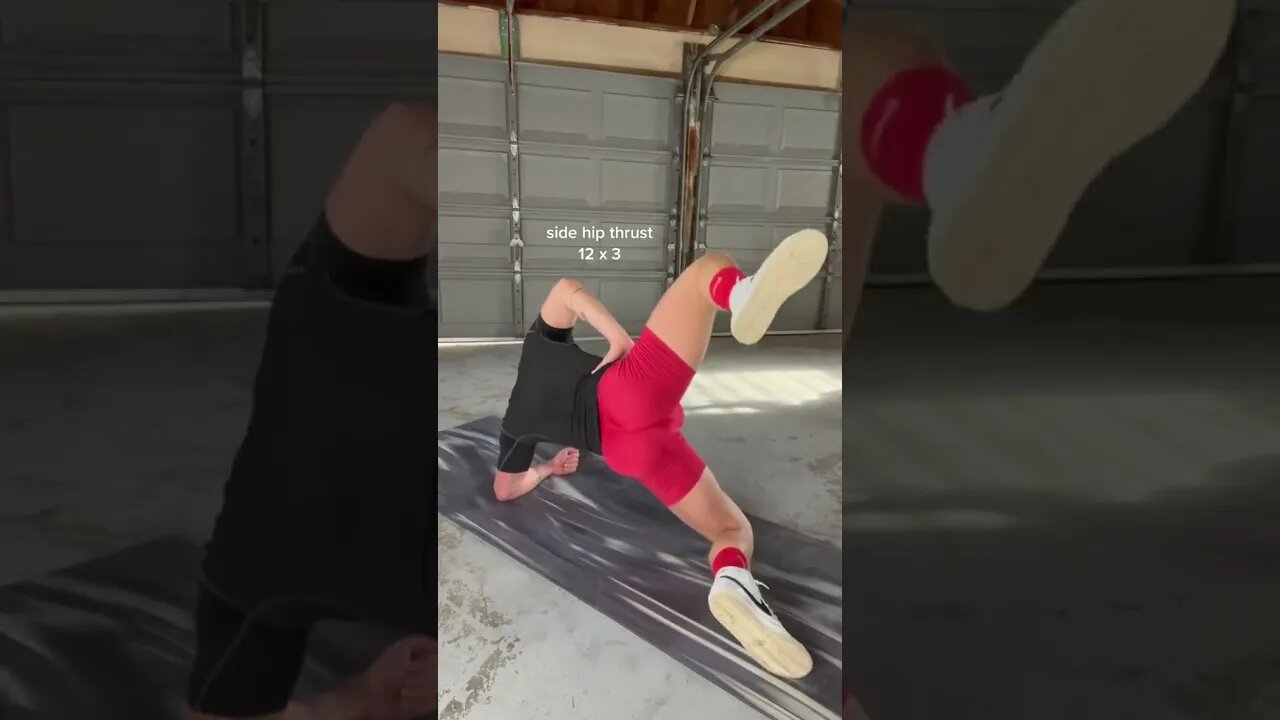Premium Only Content

HOME BOOTY BURNER 🏠 (NO EQUIPAMENT)
➡️The Best Vertical Jump Program! Start now!!
https://bit.ly/VerticallJumpTraining
➡️Best Supplements to Improve Your Workout
https://amzn.to/3eYzuXT
➡️Supplements I use and recommend (Good and Cheap)
Creatine: https://amzn.to/3f93xw0
Milky Drink UHT 15g Protein: https://amzn.to/3dsxG9n
Whey Protein: https://amzn.to/3eYHUOZ
Pre Workout: https://amzn.to/3qTrmL9
Glutamine: https://amzn.to/3dxWJrG
➡️BEST Products To IMPROVE Your Training Performance⤵️
https://amzn.to/3f6zTri
Subscribe: https://www.youtube.com/c/ASJSportTraining?sub_confirmation=1
Share: https://youtube.com/shorts/fBAMTzRvBI8?feature=share
TAGS:
#Shorts
#Legexercises
#Upperbodyexercises
#Exercisesforrunners
#Benefits
#Cautions
#Takeaway
What are Plyometric Exercises?
Plyometric exercises, also known as "jump training" or "plyos," are exercises that involve quick, explosive movements that aim to increase power, speed, and agility. These exercises are often used by athletes to improve their performance in sports, but they can also be beneficial for anyone looking to improve their overall physical fitness and coordination. Plyometric exercises involve a quick eccentric (muscle lengthening) phase followed by an explosive concentric (muscle shortening) phase. This type of training can help to improve muscle strength, power, and coordination by teaching the muscles to produce maximal force in a short amount of time.
Some examples of plyometric exercises include box jumps, broad jumps, depth jumps, plyometric push-ups, squat jumps, tuck jumps, lateral box jumps, and single-leg hops. It is important to start with lower intensity plyometric exercises and gradually increase the difficulty as your strength and coordination improve. It is also important to wear appropriate footwear and to use proper form to reduce the risk of injury.
How to Do 8 Different Plyometric Exercises
Here are instructions for eight different plyometric exercises that you can try:
1. Box jumps: Stand in front of a box or step with your feet shoulder-width apart. Bend your knees slightly and then jump up onto the box, landing with both feet on top. Step back down to the starting position and repeat. You can increase the difficulty by using a higher box or by performing the exercise more quickly.
2. Broad jumps: Stand with your feet shoulder-width apart. Bend your knees slightly and then jump forward as far as you can, landing with both feet on the ground. You can increase the difficulty by jumping farther or by adding in multiple jumps in a row.
3. Depth jumps: Stand on top of a box or step with your feet shoulder-width apart. Step off the box and land on the ground with both feet. As soon as you land, jump back up onto the box or step. You can increase the difficulty by using a higher box or by adding in multiple jumps in a row.
4. Plyometric push-ups: Start in a plank position with your hands on the ground and your feet together. Lower your body down towards the ground and then push up explosively, using the strength of your upper body to lift your hands off the ground. You can increase the difficulty by using a wider hand placement or by adding in multiple push-ups in a row.
5. Squat jumps: Stand with your feet shoulder-width apart and your hands at your sides. Lower your body down into a squat position and then explode upwards, jumping as high as you can. Land softly on the balls of your feet and then immediately lower back down into a squat position. Repeat the exercise.
6. Tuck jumps: Stand with your feet shoulder-width apart and your hands at your sides. Bend your knees slightly and then jump up, bringing your knees towards your chest. Land softly on the balls of your feet and then immediately jump again.
7. Lateral box jumps: Stand to the side of a box or step with your feet shoulder-width apart. Bend your knees slightly and then jump up onto the box, landing with both feet on top. Step back down to the starting position and repeat. You can increase the difficulty by using a higher box or by performing the exercise more quickly.
8. Single-leg hops: Stand on one leg with your other leg bent and lifted off the ground. Hop forward as far as you can, landing on the same leg. Repeat the exercise, hopping in the opposite direction. You can increase the difficulty by hopping farther or by adding in multiple hops in a row.
Remember to start with lower intensity plyometric exercises and gradually increase the difficulty as your strength and coordination improve. It is also important to wear appropriate footwear and to use proper form to reduce the risk of injury.
how to dunk,how to touch rim,how to increase vertical,how to increase vertical jump,vertical jump,how to jump,tips for dunking,progress,day 1,motivation,inspiration,progress for dunking,dunking at 5'7,dunking at 5'8,how to dunk at 5'7,short people dunking,vertical,workout,working out,plyometrics workout,plyometrics,plyometric vertical jump,plyometric dunking,dunking progress,how i increased my vertical
-
 LIVE
LIVE
BEK TV
21 hours agoTrent Loos in the Morning 6/13/2025
291 watching -
 LIVE
LIVE
Lofi Girl
2 years agolofi hip hop radio 📚 - beats to relax/study to
2,212 watching -
 2:09:32
2:09:32
Side Scrollers Podcast
20 hours agoThese People Are Insufferable Twats | Side Scrollers Live
36.1K9 -
 2:57:50
2:57:50
The Pascal Show
19 hours ago $1.51 earnedDIDDY TRIAL LIVE! Jane Doe 'Victim #2' Defense CROSS! Diddy Trial Day 22
10.3K -
 7:58:54
7:58:54
TheBeardedNerdd
8 hours ago🔴 LIVE- Tarkov Labs and what not
7.02K1 -
 13:28
13:28
Actual Justice Warrior
19 hours agoBaltimore Squatters STEAL Taxpayer Funded Housing
29.6K3 -
 LIVE
LIVE
DoldrumDan
6 hours ago $0.17 earnedRAREST WEAPON - CHALLENGE RUN - First Playthrough - Elden Ring ?! DAY 18
128 watching -
![[Finale] MindsEye l Day 2 (June 12th)](https://1a-1791.com/video/fww1/cf/s8/1/B/T/U/S/BTUSy.Tkob-small-Continuing-MindsEye-l-Day-2.jpg) 6:29:11
6:29:11
darkprometheus112
7 hours ago $0.18 earned[Finale] MindsEye l Day 2 (June 12th)
5.5K1 -
 LIVE
LIVE
B_DubzZ
2 hours ago🔴Live | Warzone
92 watching -
 1:13:58
1:13:58
Larry O'Connor
19 hours ago🚨BREAKING: Democrat Governors TORCHED LIVE! Newsom Attacks OUR SHOW!
19.1K33